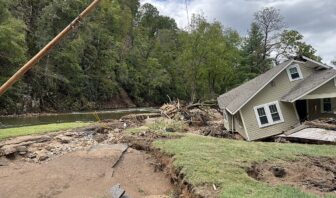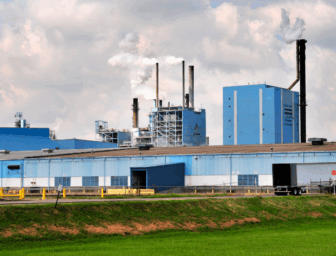Maryland legislators got a good look at what global warming could mean for Annapolis on their way to work today. Proponents of the
 PRESS RELEASE
PRESS RELEASE
CONTACT: Brad Heavner: (410) 227-8949
Anne Havemann: (202) 997-2466
Advocates of Global Warming Solutions Act Draw the Line for Global Warming
Activists Line Annapolis Sidewalks in Chalk, Show 20 Feet of Sea Level Rise
ANNAPOLIS, March 24 – Maryland legislators got a good look at what global warming could mean for Annapolis on their way to work today. Proponents of the “Global Warming Solutions Act” spent the morning drawing a line in chalk along the streets of Annapolis showing how twenty feet of sea level rise would affect the city. Scientists predict that without serious cuts in global warming pollution, the world will experience twenty feet of sea level rise if and when the Greenland ice sheets melt.
“Maryland is one of the most vulnerable states in the nation to sea level rise,” said Claire Douglass, MD Director of the Chesapeake Climate Action Network. “With over 3,100 miles of coastline, it is highly susceptible to the impacts of global warming and should be leading the nation in finding solutions. The MD legislature right now has the opportunity to pass a bill that will make Maryland a leader and I’m here to make sure my elected officials make the right choice.”
The “Global Warming Solutions Act” (SB 309/HB 712) was introduced by Sen. Paul Pinsky and Del. Kumar Barve and would require Maryland to reduce its global warming pollution 25% by 2020. This target, based on what scientists recommend is necessary to avoid the worst impacts of global warming, would be the strongest in the nation.
“Maryland elected officials have an enormous opportunity – some would say responsibility –to take immediate action on global warming,” said Cindy Schwartz, Director of the MD League of Conservation Voters. “Global warming will clearly have devastating impacts on Annapolis and the entire state, and I join thousands of concerned Maryland citizens, businesses, and faith leaders in calling on the General Assembly to commit to global warming solutions now.”
Sea level rise already threatens the state’s 3,100 miles of shoreline. Water levels in the Chesapeake Bay are rising twice as fast as the global average rate of sea level rise, inundating many of the bay’s islands and threatening coastal habitat for the nearly 1.5 million shorebirds that pass through each spring, not to mention for the beach-goers who flock to the shores in the summer. The Environmental Protection Agency estimates average temperatures in Maryland could rise about 3 degrees Fahrenheit by 2100 if global warming continues unabated.
“Maryland is already well on its way to reaching the goals set out in the “Global Warming Solutions Act,” said Brad Heavner, Director of Environment Maryland. “The bill simply solidifies Maryland’s ongoing commitment to reducing its contribution to global warming.”
Public Perceptions about Global Warming
In a 2007 Washington Post poll, 86% of respondents said they think global warming will be a serious problem if nothing is done to reduce it in the future, and a majority think global warming is the single biggest environmental problem the world faces at this time. In addition, 70% think the government should do more than it’s doing now to try to deal with global warming. (Washington Post/ABC News/Stanford University http://www.washingtonpost.com/wp-srv/nation/polls/postpoll_environment_042007.html April 10, 2007 Sample: 1002 adults nationwide)
“Green Collar” Job Opportunities
A study by Baltimore-based International Center for Sustainable Development, which was funded by the state Department of Business and Economic Development, found that clean energy industries could generate between 144,000 to 326,000 jobs in Maryland over the next 20 years, contributing $5.7 billion in wages and salaries to Maryland citizens and boosting state and local tax revenues by $973 million. The report can be found here: http://www.solarcities.org/pdf/MCECStudyReport2-28-07.pdf.
Impacts of Global Warming
• Maryland, with its 3,100 miles of tidally influenced coastline, is highly susceptible to negative impacts from global warming.
• Global average temperatures increased by more than 1.4 ° F in the past century. Sea level is rising, ice and snow cover are decreasing, and storm intensity has increased.
• World average temperatures could increase by another 3 to 7° F above late 20th century levels by the end of this century, depending on future emissions of global warming pollutants. Sea level could rise by between 11 and 17 inches, threatening low-lying coastal areas.
The Alliance for Global Warming Solutions, which organized today’s event, held global warming town hall meetings across the state last fall and has delivered more than 18,000 citizen postcards to the O’Malley Administration asking for targeted reductions of greenhouse gases. The Alliance for Global Warming Solutions is composed of health, faith, business, environmental and community groups working together to find solutions to this global crisis. Visit www.alliancemd.org for more information.
###




